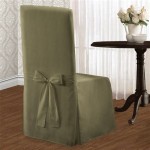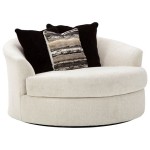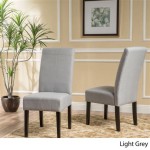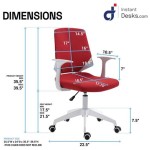Best Outdoor Rocking Chairs For Your Porch: A Comprehensive Guide
The quintessential image of a welcoming porch often includes a comfortable rocking chair. More than just a seat, an outdoor rocking chair offers a place for relaxation, contemplation, and enjoying the simple pleasures of nature. Selecting the best outdoor rocking chair requires careful consideration of numerous factors, including material, design, comfort, and durability. This article provides a detailed overview of the key aspects to consider when choosing the perfect rocking chair for your porch.
Understanding Material Options: Durability and Aesthetics
The material of an outdoor rocking chair significantly impacts its longevity and suitability for different climates. Various materials offer distinct advantages and disadvantages concerning weather resistance, maintenance requirements, and aesthetic appeal.
Wood: Traditional wooden rocking chairs exude a classic charm. Hardwoods like teak, oak, and acacia are naturally durable and weather-resistant due to their density and oil content. Teak is particularly prized for its resistance to rot, decay, and insects, making it an excellent choice for humid environments. However, even the most durable hardwoods require regular maintenance, such as cleaning and occasional sealing or oiling, to prevent cracking, warping, or fading.
Softer woods like pine and cedar are more affordable options, but they are less resistant to weathering and require more frequent treatment with preservatives and sealants. Pressure-treated wood offers enhanced protection against rot and insects, extending its lifespan, but it may not possess the same aesthetic appeal as natural hardwoods. The choice of wood depends on the desired level of durability, maintenance commitment, and budget.
Polywood (Recycled Plastic): Polywood, made from recycled plastic lumber, has gained popularity as a sustainable and low-maintenance alternative to wood. This material is exceptionally resistant to moisture, insects, and UV radiation, making it ideal for coastal areas and regions with harsh weather conditions. Polywood does not splinter, crack, rot, or fade, eliminating the need for painting, staining, or sealing. It can be easily cleaned with soap and water. While Polywood replicates the appearance of wood, it may not offer the same warmth and natural texture. However, its durability and ease of maintenance make it a practical choice for many homeowners.
Metal: Metal rocking chairs, typically constructed from aluminum, wrought iron, or steel, offer strength and durability. Aluminum is lightweight and rust-resistant, making it a good option for areas with moderate weather. Wrought iron provides a classic, decorative look but is heavier and more susceptible to rust if not properly treated. Steel is robust but requires a protective coating or powder coating to prevent corrosion. Metal rocking chairs can become hot in direct sunlight, so cushions may be necessary for added comfort. Maintenance involves periodic cleaning and rust prevention measures.
Resin Wicker: Resin wicker, made from synthetic fibers woven around a metal frame, offers a lightweight and weather-resistant option. It mimics the look of natural wicker but is far more durable and less prone to damage from moisture, insects, and UV radiation. Resin wicker is available in various colors and styles, providing versatility in design. It is easy to clean and requires minimal maintenance. However, extreme temperatures can cause the resin to become brittle or crack over time.
Ergonomic Design and Comfort Considerations
The comfort of a rocking chair is paramount. Ergonomic design principles play a crucial role in ensuring that the chair provides adequate support and promotes relaxation. Factors such as seat height, backrest angle, armrest placement, and cushioning all contribute to the overall comfort experience.
Seat Height and Depth: The seat height should allow your feet to rest comfortably on the ground while rocking. A seat that is too high can cause discomfort in the legs and back, while a seat that is too low can make it difficult to get in and out of the chair. Seat depth should provide adequate support for your thighs without putting pressure on the back of your knees. Consider the average height of those who will be using the chair when selecting the appropriate seat dimensions.
Backrest Angle and Support: The backrest angle should provide sufficient lumbar support. A slightly reclined backrest is ideal for relaxation, while a more upright backrest is suitable for reading or conversation. Look for chairs with contoured backrests or adjustable lumbar support to customize the comfort level. High-back rocking chairs offer more support for the head and neck, which can be beneficial for those who plan to spend extended periods in the chair.
Armrest Placement and Height: Armrests should be positioned at a comfortable height and width to support your arms and shoulders. Armrests that are too high can cause shoulder strain, while armrests that are too low can lead to discomfort in the elbows. Consider the width of the armrests as well; wider armrests offer more surface area for resting your arms or placing a drink.
Cushioning and Padding: Cushions and padding can significantly enhance the comfort of a rocking chair. Look for cushions made from weather-resistant fabrics, such as Sunbrella or polyester, that are designed to withstand outdoor conditions. High-density foam provides better support and retains its shape longer than low-density foam. Consider adding throw pillows for extra comfort and personalization. Removable cushions are easier to clean and maintain.
Rocking Motion: The smoothness and range of the rocking motion are essential for a comfortable experience. A gentle, consistent rocking motion promotes relaxation, while a jerky or uneven motion can be jarring. Test the rocking motion before purchasing the chair to ensure that it meets your preferences.
Style and Aesthetic Harmony with Your Porch
An outdoor rocking chair should not only be comfortable and durable but also complement the overall style and aesthetic of your porch. The chair's design, color, and finish should harmonize with the existing furniture, architectural elements, and landscaping.
Traditional Styles: Traditional rocking chairs often feature curved slats, spindle backs, and a classic silhouette. These chairs evoke a sense of nostalgia and timeless elegance. They are well-suited for porches with a traditional or farmhouse aesthetic. Consider opting for a wooden rocking chair with a natural finish or a painted rocking chair in a classic color like white, black, or navy.
Modern Styles: Modern rocking chairs often incorporate clean lines, minimalist designs, and contemporary materials. These chairs are ideal for porches with a modern or contemporary aesthetic. Look for rocking chairs made from metal, polywood, or resin wicker with a sleek, streamlined design. Neutral colors like gray, black, or white are popular choices for modern outdoor furniture.
Rustic Styles: Rustic rocking chairs often feature reclaimed wood, distressed finishes, and a rugged, natural look. These chairs are well-suited for porches with a rustic or cottage-style aesthetic. Consider opting for a wooden rocking chair with a weathered finish or a rocking chair made from natural materials like wicker or rattan.
Color Coordination: Choose a rocking chair color that complements the existing color scheme of your porch. Consider the colors of your siding, trim, flooring, and other furniture. Neutral colors like white, gray, and beige are versatile and can easily blend with any style. Bold colors like red, blue, or green can add a pop of vibrancy to your porch, but be sure to use them sparingly to avoid overwhelming the space.
Accessorizing: Enhance the aesthetic appeal of your rocking chair with cushions, throw pillows, and blankets. Choose accessories that complement the chair's style and color scheme. Add potted plants, lanterns, or decorative items to create a cozy and inviting atmosphere on your porch.
Size and Scale: Consider the size of your porch when selecting a rocking chair. A large, oversized rocking chair may overwhelm a small porch, while a small, delicate rocking chair may get lost on a large porch. Choose a rocking chair that is proportionate to the size of your porch and the surrounding furniture.
Ultimately, the best outdoor rocking chair for your porch is one that combines durability, comfort, and style. By carefully considering the material, ergonomic design, and aesthetic harmony, you can create a relaxing and inviting outdoor space that you will enjoy for years to come.
The key to choosing a truly satisfying rocking chair lies in balancing these factors to meet your individual needs and preferences. Take the time to research different options, read reviews, and try out chairs in person whenever possible. With a little planning and effort, you can find the perfect rocking chair to enhance your porch and provide a comfortable spot for relaxation and enjoyment.

5 Best Rocking Chairs The Strategist

10 Outdoor Rocking Chairs For Any Home

5 Best Outdoor Rocking Chairs

15 Best Outdoor Rocking Chairs For The Porch Or Patio In 2024

Porch Rockers Kb Patio Furniture Florida

Weather Resistant Outdoor Rocking Chair Heavy Singapore Ubuy

3 Piece Patio Swivel Rocker Chairs Set 2 360 Degree Rocking With 1 Glass Top Table Pe Rattan Outdoor Bistro Cushions For

20 Best Outdoor Modern Rocking Chairs For Your Porch Patio Candie Anderson

Black Plastic Outdoor Rocking Chair Kenly Classic Singapore Ubuy

What Patio Furniture Is Best For Outdoors A Guide To Choosing F Cosiest








